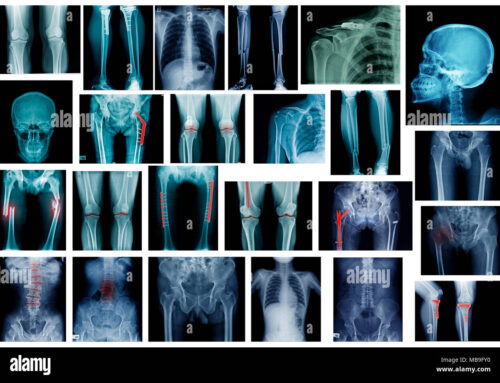Digital Radiography (DR) is the new frontier of X-ray imaging technology, providing benefits that can take patient care at your facility to a higher level.
Without a doubt, upgrading your X-ray equipment can be a considerable investment, but we believe these 5 benefits that DR machines can bring to your facility or practice are well worth the cost:
- Increased image quality
- Improved image enhancement
- Smoother workflow
- Greater storage capacity
- Decreased radiation exposure
Let’s look at each of the benefits in more detail.
1. Increased Image Quality
Without getting bogged down in the specifics, image quality is greatly increased due to advancements in DR technology, including improvements in both hardware and software.
Taking advantage of a wider dynamic range makes DR less sensitive to over-exposure and under-exposure.
Additionally, radiologists have options, made possible by DR system software, to apply special image processing techniques to further enhance the overall clarity and depth of the image, which improves diagnostic decisions.
2. Improved Image Enhancement
Due to these advancements in software capabilities we just mentioned, images can be enhanced in the following ways:
Increased or decreased brightness and/or contrast
Flipped or inverted views
Magnified areas of interest
Marked with measurements and important notes directly on the image itself
High-quality, annotated images benefit doctors and patients alike. When patients can clearly see the irregularities that doctors have discovered, doctors can deliver a more effective explanation.
In this way, doctors foster better patient understanding of the diagnosis and treatment protocols, which increases the likelihood that patients will be more agreeable to the doctor’s suggestions.
The likelihood of positive patient outcomes increases as a result.
3. Smoother Workflow
DR equipment has developed a marked reputation for its ease of use, which means less time required per image (some estimates say 90-95% less time compared to analog film), fewer mistakes and retaken images, and less time required for training.
Since digital X-ray scans are captured by a digital receptor and sent to a view station, they can be obtained almost instantly, meaning the time lost while waiting for chemical development of X-ray film is eliminated.
Increased efficiency facilitates greater patient volume.
DR also allows the radiologist the option to retake a scan immediately in the event that the initial image was unclear or contained artifacts, possibly due to patient movement during the scan.
4. Greater Storage Capacity and Shareability
It’s amazing how quickly hard copies of images accumulate, often requiring an impractical amount of storage space for facilities of any size.
Simply put, such designated storage spaces are being made obsolete by the DR and PACS (picture archiving and communication system) combination.
Images no longer have to be retrieved by hand from the records department or storage facility. Instead, any digital image which has been stored electronically in a PACS system can be instantly called up at any associated workstation where it’s needed, greatly decreasing delays in patient treatment.
5. Decreased Radiation Exposure
Digital imaging does not produce as much radiation compared with many other modalities, and, due to its increased speed (mentioned above), the time that patients are exposed to radiation is greatly decreased.
It’s important to note that safety precautions for patients and staff should still be strictly followed to further minimize exposure.
Get the Benefits of Digital Radiography — Upgrading Is Affordable
When you consider upgrading your X-ray equipment, one of the first objections or concerns that’s raised is how such new technology is going to be paid for.
Southwest X-Ray has helped many practices and facilities find the right equipment and the right payment options to make the upgrade to DR possible.




